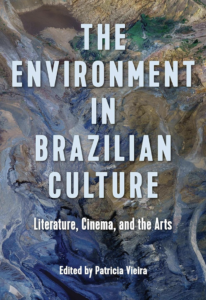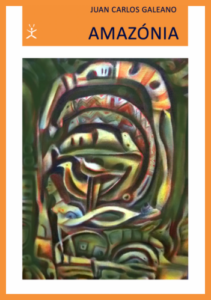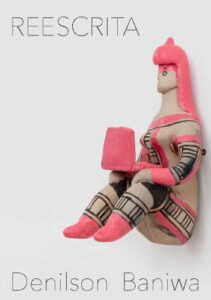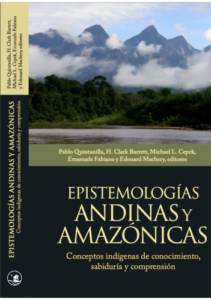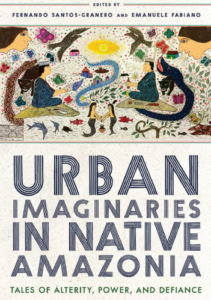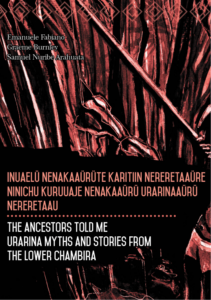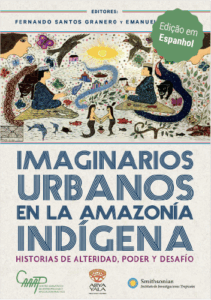
Fernando Santos-Granero and Emanuele Fabiano, eds. (2025) Imaginarios Urbanos en la Amazonía Indígena. Historias de Alteridad, Poder y Desafío. Lima/Quito: CAAAP, Abya Yala, Smithsonian Tropical Research Institute.
This book aims to explore the centrality of the environment in shaping Brazilian culture. How have different Brazilian cultural productions depicted nature? In which ways has the environment determined Brazilian literature, cinema, and the arts? How have disparate geographical regions—the Amazon, the Northeast, etc.—been portrayed in Brazilian texts, films and other artworks? What are the Brazilian contributions to current debates on critical plant and animal studies, post-humanism, and, more broadly, the environmental humanities? The book brings together a collection of essays that seek to answer some of these questions and to assess the centrality of the environment in shaping Brazilian literature, cinema and the arts.
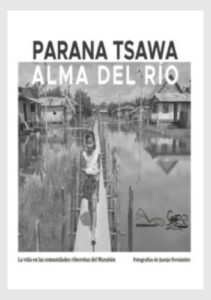
Photographic work by Juanjo Fernandéz about life in riverside communities in Marañon (Peru), threatened by oil extraction. With a text by Patrícia Vieira titled “Las Vidas de los Ríos Amazónicos.”
Denilson Baniwa (2024), Reescrita. Coimbra: Colégio das Artes and Centro de Estudos Sociais, Projeto ECO.
Book by artist Denilson Baniwa, with a selection of some of his most striking works and of his poems in dialogue with his art.
Pablo Quintanilla, Clark Barrett, Michael L. Cepek, Emanuele Fabiano y Edouard Machery, eds. (2023) Epistemologías andinas y amazónicas Conceptos indígenas de conocimiento, sabiduría y comprensión. Fondo Editorial Pontificia Universidad Católica del Perú. Lima: Perú.
This book is the result of intercultural and interdisciplinary research that looks at the different ways in which Andeans, Amazonians and Westerners see each other and themselves, where the aim is precisely to learn from these differences in order to get to know each other better.
Manuel Martín Brañas, Emanuele Fabiano, Dennis Del Castillo Torres, eds. (2023) Donde habitan los neba: naturaleza, cultura e impactos ambientales en los territorios del Pueblo Urarina. Instituto de Investigaciones de la Amazonía Peruana (IIAP), Universidad de St. Andrews. Iquitos: Perú.
The book gathers the results of research conducted for almost a decade in the incomparable natural setting of the Chambira River basin: a biocultural landscape of great importance for the western Amazon and the planet. The volume represents the multidisciplinary and collaborative work carried out with the communities, whose purpose is to better understand the dynamics that govern the floodable ecosystems in the territory of the Urarina people and their relationships with non-human ecosystems.
Fernando Santos-Granero e Emanuele Fabiano, eds. (2023) Urban Imaginaries in Native Amazonia: Tales of Alterity, Power, and Defiance. Tucson: The University of Arizona Press.
Urban life has long intrigued Indigenous Amazonians, who regard cities as the locus of both extraordinary power and danger. Cities have thus become models for the representation of extreme alterity under the guise of other-than-human enchanted cities. This volume seeks to analyze how these ambiguous urban imaginaries—complex representations that function as cognitive tools and blueprints for social action—express a singular view of cosmopolitical relations, how they inform and shape forest-city interactions, and what were the historical processes through which they came into existence.
Emanuele Fabiano, Graeme Burnley & Samuel Nuribe. (2022) ArahuataInuaelü nenakaaürüte karitiin nereretaaüre. Ninichu kuruuaje nenakaaürü Urarinaaürü nereretaau / The ancestors told me. Urarina myths and stories from the lower Chambira. Lima: CAAAP/IIAP/U.of St. Andrews.
Emanuele Fabiano, Graeme Burnley & Samuel Nuribe. (2022) ArahuataInuaelü nenakaaürüte karitiin nereretaaüre. Ninichu kuruuaje nenakaaürü Urarinaaürü nereretaau / Los antiguos me contaron. Mitos y cuentos urarinas del bajo Chambira Lima: CAAAP/IIAP/U. of St. Andrews.
This book is the result of a joint project of over three years, in which we bring together narratives and myths of the Urarina people from the Peruvian Amazon. The transcriptions in Urarina are accompanied by translations into Spanish and English, in order to disseminate this cultural treasure and to share the rich Amazonian worldview with others in Peru and throughout the world.
The Peter Lang series Plants and Animals: Interdisciplinary Approaches, co-edited by Susan McHugh and Patrícia Vieira, publishes monographs and edited books that address key themes in the fields of plant and animal studies from an interdisciplinary perspective.
Why Plants and Animals?

